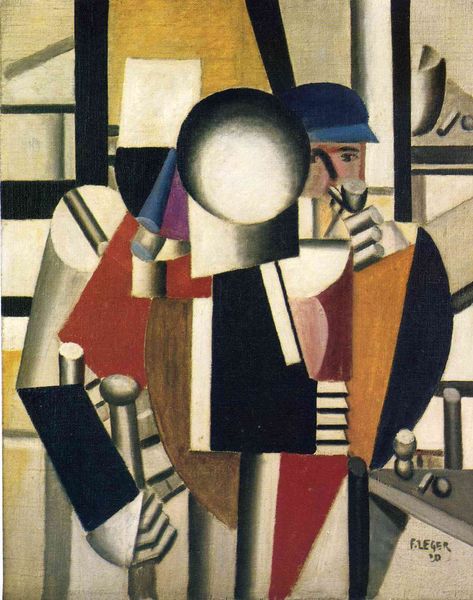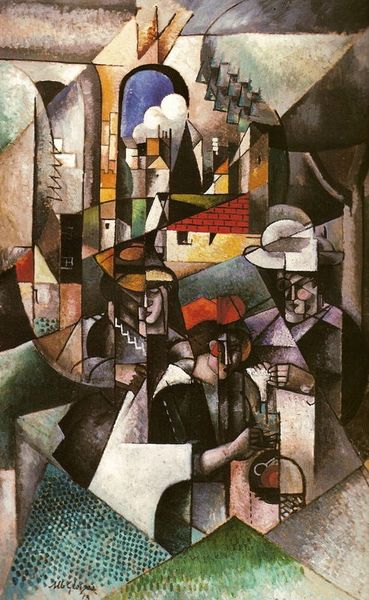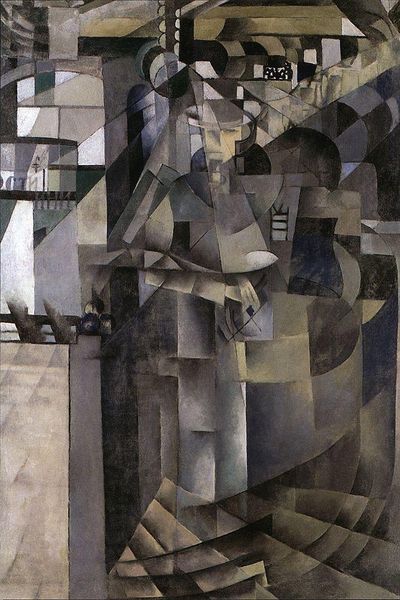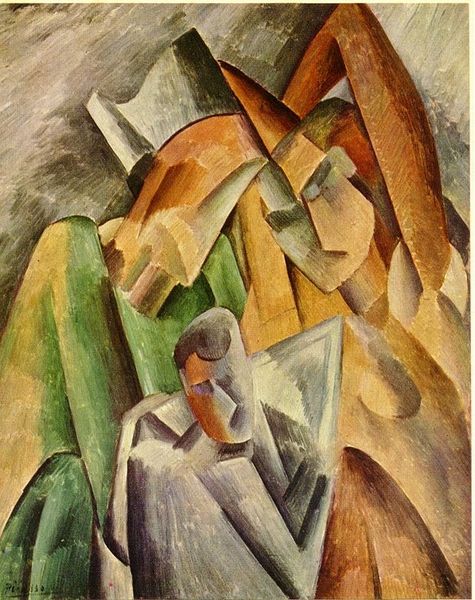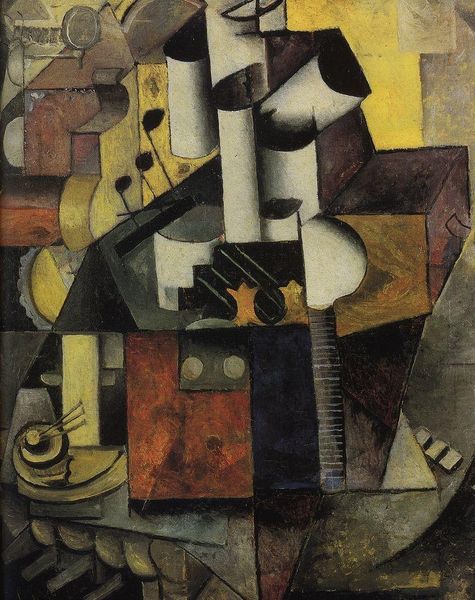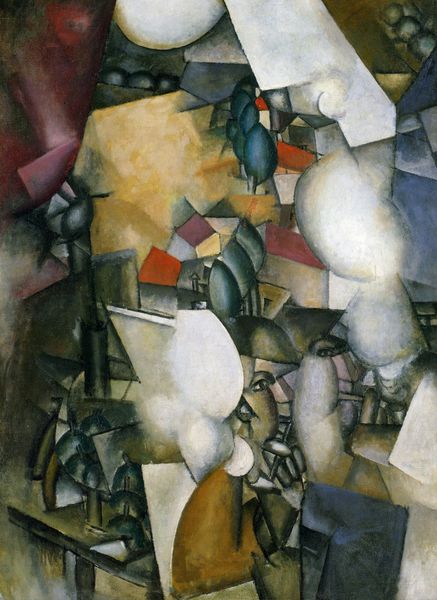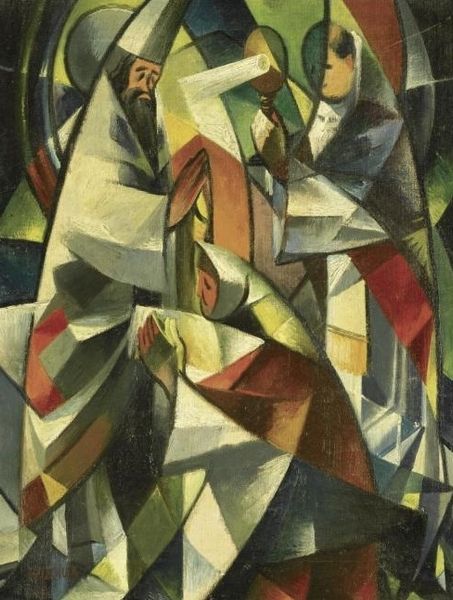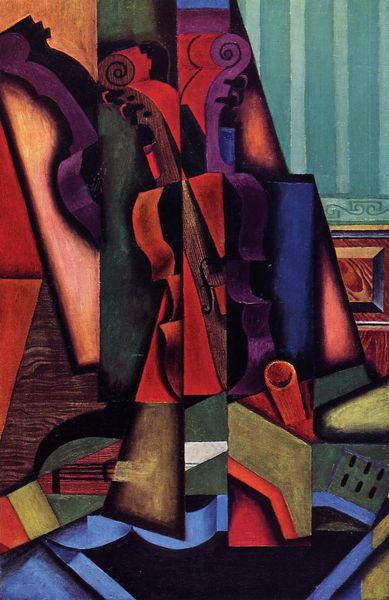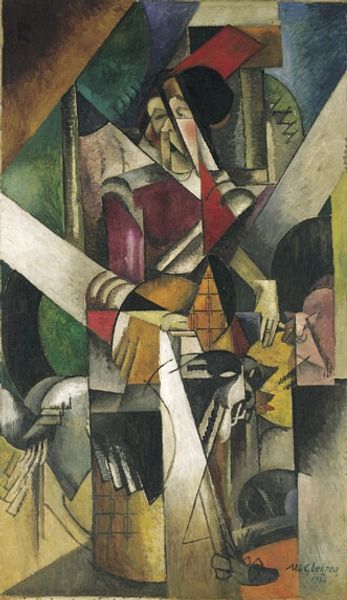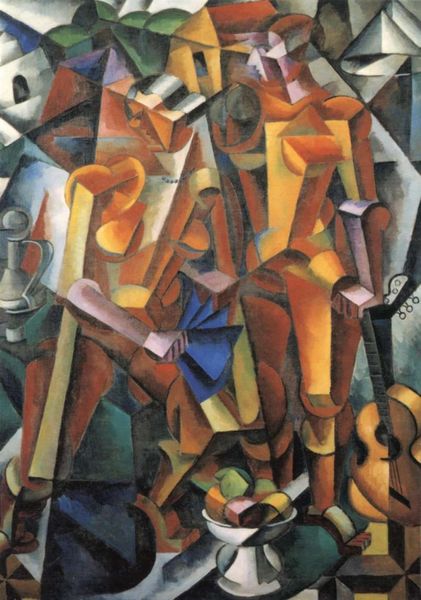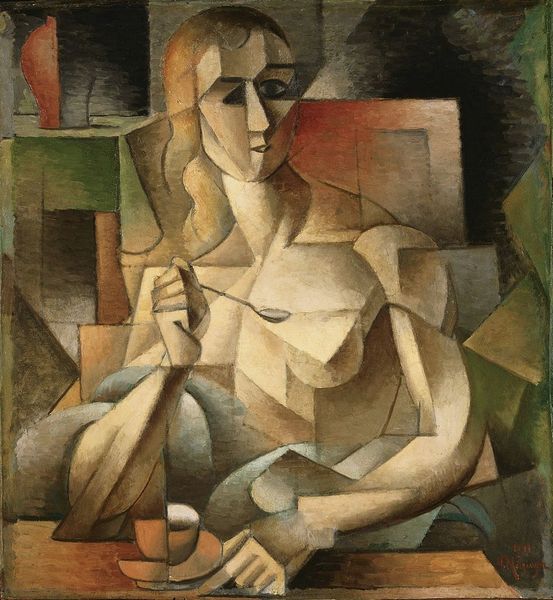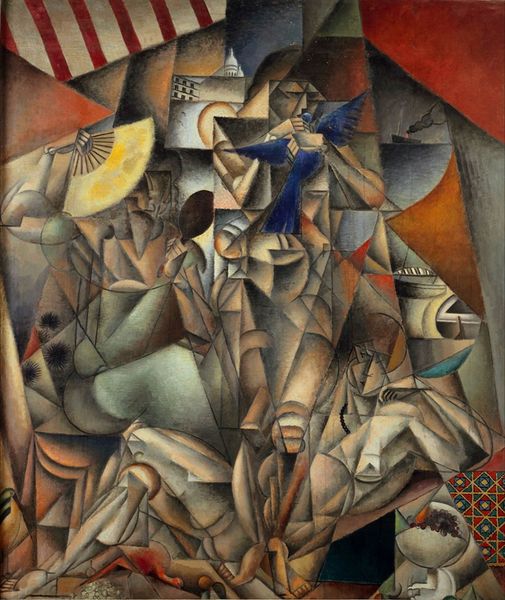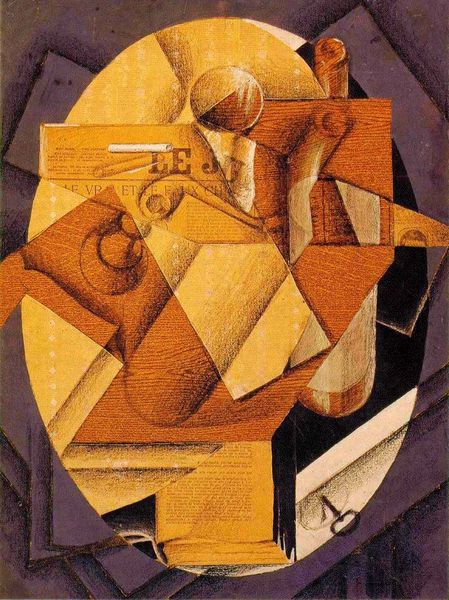
painting, oil-paint
#
portrait
#
cubism
#
art-nouveau
#
abstract painting
#
painting
#
oil-paint
#
painted
#
oil painting
#
geometric-abstraction
#
portrait art
Copyright: Public domain US
Curator: Diego Rivera’s “Portrait of Two Women,” painted in 1914, is a fascinating example of his Cubist period, a divergence from the mural style for which he's now largely known. The piece is held here at the Arkansas Arts Center. Editor: It's surprisingly subdued, given Rivera's later dynamism. The muted browns and blues create this feeling of introspection, of quiet intimacy between the two figures. The fractured planes seem to lock them into their own separate emotional spaces even as they occupy the same physical one. Curator: Exactly. The figures, though presented as subjects, are equally structural components, part of the architecture of the painting itself. It’s tempting to explore how their identities might intersect within the socio-political upheaval of pre-revolutionary Mexico. Do you feel it challenges existing portrait traditions? Editor: Absolutely. There's no glorification, no idealization. This feels like an exploration of interiority rather than exterior presentation. The figures are abstracted to such a degree that they are almost representations of an idea of “woman” or of “connection”, more than particular individuals. Their clothes appear very different and reflect some tension. Curator: Their poses and the objects around them – the book held by one figure, the way the other is standing, almost looming – add a layer of intrigue. Given Rivera’s political development, it begs us to think about the representation of women, knowledge, and perhaps class at the time. Is the painting reinforcing stereotypes, or critiquing them? Or simply indifferent? Editor: The painting's constructed, almost claustrophobic, composition creates a space that both draws us in and keeps us at a distance, which echoes how institutions of that period dealt with the role of women in intellectual life, for instance. Curator: It definitely gives us pause to reflect, doesn’t it? Art and life intertwined then, much like now. Editor: I think that tension is precisely where the power of the artwork lies – the questions it stirs. Curator: Agreed. I will remember this “Portrait of Two Women.” Editor: Me too. And that makes it a powerful, enduring image.
Comments
No comments
Be the first to comment and join the conversation on the ultimate creative platform.
